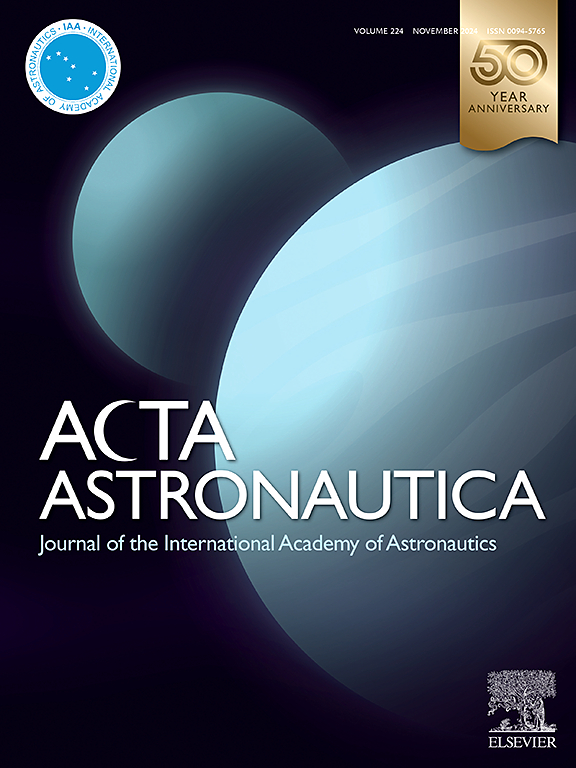Flat retroreflective arrays and foils for satellite laser ranging
IF 3.4
2区 物理与天体物理
Q1 ENGINEERING, AEROSPACE
引用次数: 0
Abstract
Retroreflective structures play an important role in laser-based space applications, serving as navigation aids for spacecraft docking and enabling precise orbit determination through satellite laser ranging. These structures must deliver a high return signal over long distances while being durable, and capable of operating in the challenging conditions of space for extended periods. Flat retroreflective structures such as retroreflective foils would be beneficial to ensure a seamless integration with various satellites, particularly CubeSats. This study analyzes the far-field diffraction patterns of various commercially available retroreflective foils, which are crucial for calculating the optical cross-section. While the retroreflected signal from these foils is notably weaker than that of conventional corner-cube retroreflectors of equivalent area, it remains several orders of magnitude stronger than that of a diffusely reflecting surface. Beyond conventional retroreflective foils, which rely on arrays of microprisms, we explore the potential of flat retroreflective structures based on metasurfaces. These nanostructures offer intriguing possibilities, such as wavelength-dependent retroreflection, and may be engineered for compatibility with space environment. In the future, such advanced designs could enable innovative applications like satellite identification or attitude determination. Moreover, we theoretically analyze how the changing attitude of the satellite affects the return signal of potentially coherently retroreflecting arrays.
卫星激光测距用平面反反射阵列和箔片
逆反射结构在基于激光的空间应用中发挥着重要作用,可以作为航天器对接的导航辅助设备,并通过卫星激光测距实现精确的轨道确定。这些结构必须在持久耐用的情况下长距离传输高返回信号,并能够在具有挑战性的空间条件下长时间运行。平面反反射结构,如反反射箔,将有助于确保与各种卫星,特别是立方体卫星的无缝集成。本研究分析了各种市售的反反射箔的远场衍射图,这是计算光学截面的关键。虽然来自这些箔片的反向反射信号明显弱于等效面积的传统角立方反向反射器,但它仍然比漫反射表面强几个数量级。除了依赖于微棱镜阵列的传统反反射箔外,我们还探索了基于超表面的平面反反射结构的潜力。这些纳米结构提供了有趣的可能性,例如波长相关的反向反射,并且可以设计为与空间环境兼容。未来,这种先进的设计可以实现卫星识别或姿态确定等创新应用。此外,我们还从理论上分析了卫星姿态变化对潜在相干反反射阵列回波信号的影响。
本文章由计算机程序翻译,如有差异,请以英文原文为准。
求助全文
约1分钟内获得全文
求助全文
来源期刊

Acta Astronautica
工程技术-工程:宇航
CiteScore
7.20
自引率
22.90%
发文量
599
审稿时长
53 days
期刊介绍:
Acta Astronautica is sponsored by the International Academy of Astronautics. Content is based on original contributions in all fields of basic, engineering, life and social space sciences and of space technology related to:
The peaceful scientific exploration of space,
Its exploitation for human welfare and progress,
Conception, design, development and operation of space-borne and Earth-based systems,
In addition to regular issues, the journal publishes selected proceedings of the annual International Astronautical Congress (IAC), transactions of the IAA and special issues on topics of current interest, such as microgravity, space station technology, geostationary orbits, and space economics. Other subject areas include satellite technology, space transportation and communications, space energy, power and propulsion, astrodynamics, extraterrestrial intelligence and Earth observations.
 求助内容:
求助内容: 应助结果提醒方式:
应助结果提醒方式:


